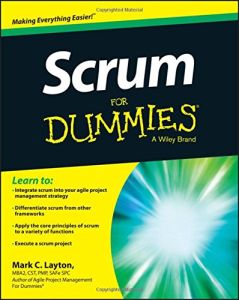加入 getAbstract 阅读摘要

加入 getAbstract 阅读摘要
Mark C. Layton
Scrum For Dummies
Wiley, 2015
看看什么内容?
Prepare for “scrum mastery” by reviewing the basics of agile project management.
Recommendation
Mark C. Layton lays out the basic principles of the “scrum” approach to project management. He provides a fast-paced introduction to “sprint planning,” “daily scrum,” “sprint reviews” and tools for agile project delivery. Layton depicts how scrum creates value beyond software development by giving varied industry examples, from civil engineering in India to electronic health records in the United States. The structured “Dummies” format works well for newcomers and features enlightening sidebar tips, technical backgrounders and pivotal points. getAbstract finds that Layton’s manual will serve novice project managers, with or without traditional training, as well as anyone else who wants to implement transparent, flexible and agile project management.
Summary
About the Author
Mark C. Layton is a strategist and instructor in project and program management.





















Comment on this summary